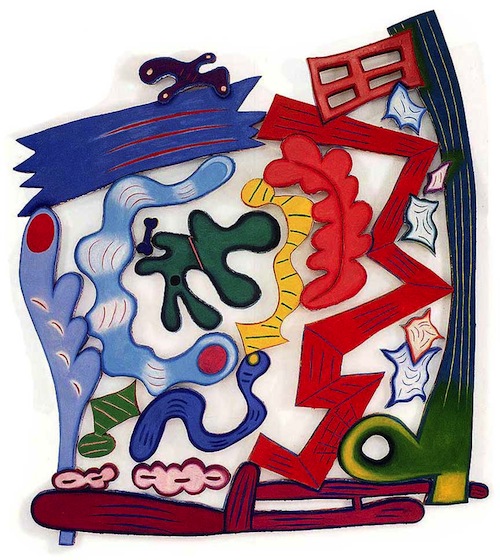Sometimes the best thing we can do is turn out the lights.
Over the past few weeks my high school freshmen have been looking into why artists use abstraction as a way of making art. To start the unit we viewed the work of Art21-featured artist Elizabeth Murray, and thought about how artists bridge the perceived gap between painting and sculpture. As a result, students created their own works that joined drawing or painting with sculpture. After the first half of the unit we began thinking about how certain kinds of approaches such as exaggeration, simplification, and rearrangement of certain elements, can be ways of utilizing abstraction.
As we looked into a series of classic abstract works—including Marcel Duchamp’s Nude Descending a Staircase (1912), Romare Bearden’s Out Chorus (1979-80), and Joseph Stella’s Brooklyn Bridge (1939)—I decided to go against my inclination to do all of the looking and talking first and sketch later. While the room was simply lit by the glow of the projector, I asked students to identify specific strategies used by each of the artists on the screen and then utilize them while making their own sketches and testing out ideas.
I was surprised by the fact that students did not try to copy the art on the screen but instead tried to incorporate different approaches and strategies in their own ways. When I asked students to utilize abstraction to show movement in some way, they used Duchamp’s Nude Descending a Staircase as a starting point but I didn’t see anyone create their own version of a person on the stairs. While looking into Stella’s Brooklyn Bridge, I asked students to abstract a place they had seen or traveled to and was pleasantly surprised at the fact that there wasn’t another bridge in the bunch. Sketching in the (almost) dark was actually working!
For the longest time I had assumed, wrongly, that students should view a series of images before trying to make sketches inspired by those images. Instead of asking them to be inspired by what they saw it became even more effective in this instance to sketch inspired by what they were actually seeing.
PLEASE NOTE: Starting next month, the Teaching with Contemporary Art column will post every other week beginning May 8, which just happens to be the column’s fifth anniversary (yes, it’s been five years!). We will begin investigating our first thematic strand, “Hindsight,” over the months of May and June. More info on the exciting changes to Art21’s blog to come.




